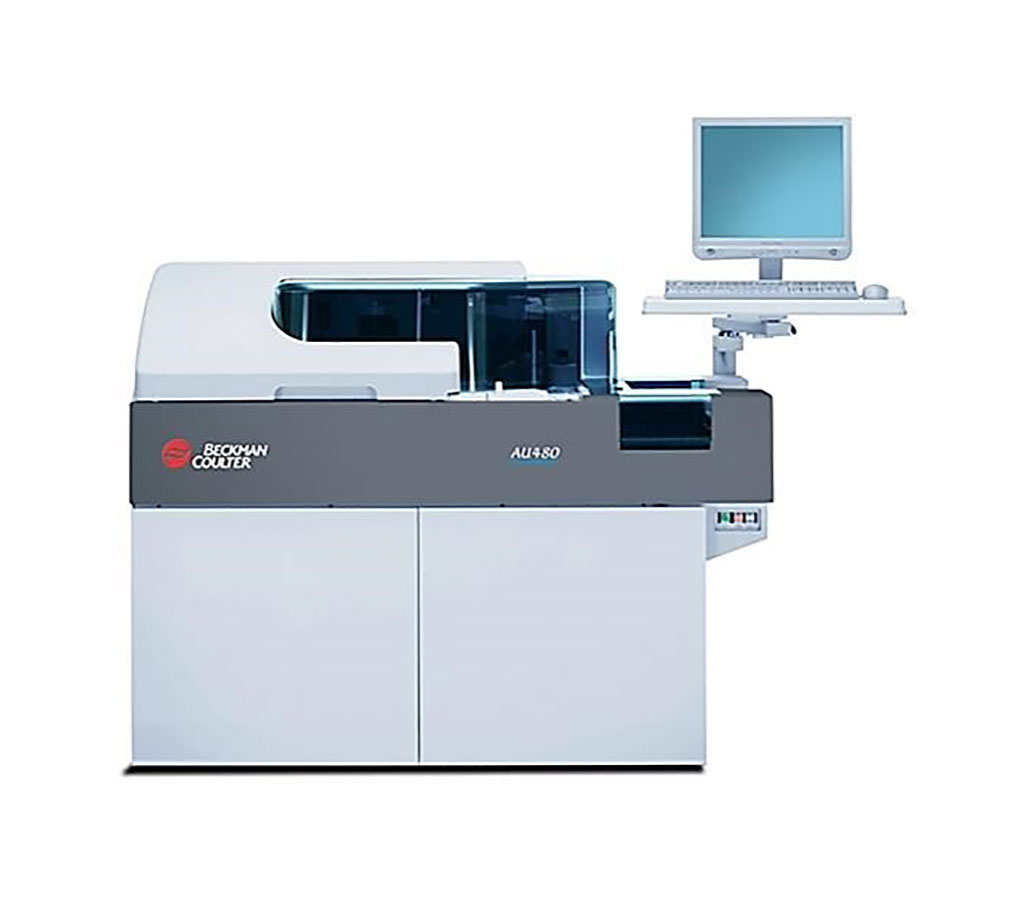Glucose Point-of-Care Measurements Evaluated for Gestational Diabetes
By LabMedica International staff writers
Posted on 04 Mar 2020
Gestational diabetes is a condition in which a woman without diabetes develops high blood sugar levels during pregnancy. Gestational diabetes generally results in few symptoms; however, it does increase the risk of pre-eclampsia, depression, and requiring a Caesarean section.Posted on 04 Mar 2020
Glucose meter devices are not currently recommended for diagnostic purposes. An important factor to consider is that almost all of the prior studies evaluating the diagnostic capability of point-of-care (POC) measurement for gestational diabetes mellitus (GDM) compare the POC results with venous glucose samples as the reference standard with suboptimal sample handling.

Image: The AU640 chemistry analyzer is an ideal primary clinical chemistry analyzer for low- to mid-volume hospitals and laboratories (Photo courtesy of Beckman Coulter).
Scientists from the Coombe Women and Infants University Hospital (Dublin, Ireland) recruited 202 women who agreed to participate were followed up with an oral glucose tolerance test (OGTT) (mean gestation, 27.5 ±1.0 weeks) after an overnight fast (≥8 hours) between October 2017 and November 2018. A 2-hour 75 g OGTT was conducted to screen for GDM. The team collected venous samples in a sodium fluoride additive tube the Sarstedt Fluoride EDTA S-Monovette (Sarstedt AG & Co., Nümbrecht, Germany) with immediate placement on an ice-water slurry for transportation to the laboratory within 30 minutes for prompt centrifugation to prevent glycolysis.
Glucose was measured by the hexokinase method using a Beckman Coulter AU640 analyzer (Brea, CA, USA) with a CV percentage (CV%) of 2.0% at 103 mg/dL (5.7 mmol/L) and 234 mg/dL (13.0 mmol/L). The scientists collected a drop of capillary whole blood from a distal fingertip to measure POC capillary glucose using the Bayer Contour XT meter (Leverkusen, Germany). This meter uses a flavin adenine dinucleotide glucose dehydrogenase measuring system and was selected for its performance over a wide hematocrit range.
The scientists reported that the mean ±SD time between collection of the reference standard venous samples on ice-water slurry and transportation to the laboratory for centrifugation was 17 ± 9.7), 13 ± 9.0, and 13 ± 8.9 minutes for the fasting, 1-hour, and 2-hour samples, respectively, confirming adherence to international guidelines. Based on the plasma sample, the rate of GDM was 53.5% using the recent International Association of Diabetes and Pregnancy Study Groups criteria. The correlation between POC capillary and laboratory plasma glucose was greater than 0.9 at all three time points in the derivation cohort. As a predictor of GDM, the diagnostic accuracy of POC measurement was 83.0% (95% confidence interval, 74.2–89.8).
The authors concluded that in high-resource settings where measures to inhibit glycolysis are implemented, the use of POC measurements for the diagnosis of GDM is not justified based on this study. However, in low- and medium-resource settings, where measures to inhibit glycolysis are not practicable, regression analysis using POC measurements may be acceptable compared with plasma samples subject to glycolysis. The study was published in the February 2020 issue of the journal Clinical Chemistry.
Related Links:
Coombe Women and Infants University Hospital
Sarstedt AG & Co
Beckman Coulter
Bayer









 assay.jpg)



